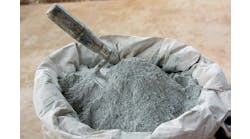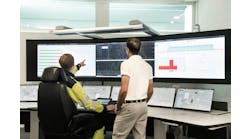National Instruments believes it detects signs of an end to the recession in its figures for the third quarter of 2009. Although revenue was down 23% on the same quarter of 2008 at $165 million, that represented a sequential increase of 8% over the previous quarter. Orders were similarly strong sequentially, increasing the end of quarter backlog by $5 million.
Sequential Recovery
Instrument control product sales, in particular, although down 28% year-over-year, were up sequentially by more than 20% after four quarters of sequential decline, leading the company to suggest that the overall test and measurement industry may have bottomed out in the second quarter and begun a sequential recovery in the third. NI president and CEO James Truchard said he was "optimistic that National Instruments will emerge in a stronger leadership position because of our long-term focus through the recession. I believe our continued investment in innovation and new product development has further differentiated National Instruments from other players in the markets we serve, expanding our opportunity to grow as did our investment in the 2001 recession."
Meanwhile third-quarter net income at ABB exceeded $1billion, up 12% on the same quarter last year, despite a 10% decline in revenues to $7.9 billion and a 21% fall in orders. EBIT (earnings before interest and tax) was up 10% at $1.4 billion. CEO Joe Hogan attributed the strong performance to "continued timely execution of the order backlog and further progress in our cost take-out program."
The overall performance at ABB is all the more remarkable given the continued decline in performance at the process automation division where revenues fell 6% and EBIT 25% compared with the same quarter of 2008 and EBIT margin was down from 11.4% to 9.1%. Even more worrying were the 42% decline in orders and 15% decline in order backlog. The steady demand from the oil and gas sector was more than offset by ongoing weakness in other sectors, said the company, with large orders down by more than 50% and base orders experiencing double-digit falls. Only the Middle East and Africa saw actual order increases in local currency terms, driven by the oil and gas sector demand.
Reducing Losses
Less gloomy financial news from Yokogawa, however, where the forecast for the first half ended September 30 has been revised upwards twice in the past two months, due, it says, to "a recovery trend in the international control business." As a result, the forecast for net sales for the half, which in August had been predicted to be 145 billion yen, was raised to nearly 150 billion yen at the end of October, and the operating loss, which in August had been predicted to be 10 billion yen, was now forecast to be just 2.4 billion. Unfortunately, that doesn't seem to have helped the forecast for net income, which still shows a predicted loss of 14 billion yen.
Invensys reported operating profit before interest and tax (OPBIT) for the first half down 24% in constant exchange rate (CER) terms at £102 million on revenue down 13% in CER terms at £1.07 billion. Orders, at £1.08 billion, were down 18% in CER terms.
Invensys Operations Management (IOM), reporting for the firs time since its creation through the combination of Invensys Process Systems (IPS), which already included Wonderware, with Eurotherm, saw OPBIT fall 41% in CER terms to £33 million on revenues down 17% at £474 million. Orders were down 23%, again in CER terms, at $491million.
Invensys CEO Ulf Henriksson suggested that IOM's performance was broadly in line with that of its competitors, although a brief comparison with the ABB figures suggests that it has, in fact, suffered rather more than some from the current downturn. One suggested explanation for that disparity is the particularly sharp decline in the oil and gas sector in the U.S.
Arguably the greatest concern however will be the decline in IOM's operating margin from 9.6% a year ago to just 7.0% this time. However, this was attributed to declining volumes, particular in the product side of the business, and both Henriksson and CFO Wayne Edmunds, the latter reporting for the first time since his move from the U.S., suggested that performance overall would be significantly improved in the second half as the results of the current restructuring come through, restoring the margin to double digit levels. "We have the ability to surprise," was Henriksson's enigmatic comment.
Differentiation
IOM's strategy, said Henriksson, would be to continue to leverage what he saw as its strengths in safety systems and advanced applications, a term which was used to include Wonderware as well as InFusion and SimSci-Esscor. It is those strengths, he argued, which give IOM differentiation on the large complex deals it must win. As a result of maintaining investment in R&D and value selling, "I believe we're taking share," he said. Moreover, IOM's target market now includes not just its own, but its competitors' installed base which, he argued, enables it to maintain a larger pipeline of order prospects.
Customer response to the integration of IPS with Eurotherm and, by implication, to the closer integration of Wonderware, had, he claimed, been favorable, prompting such comments as "We've been waiting for you to do it."



